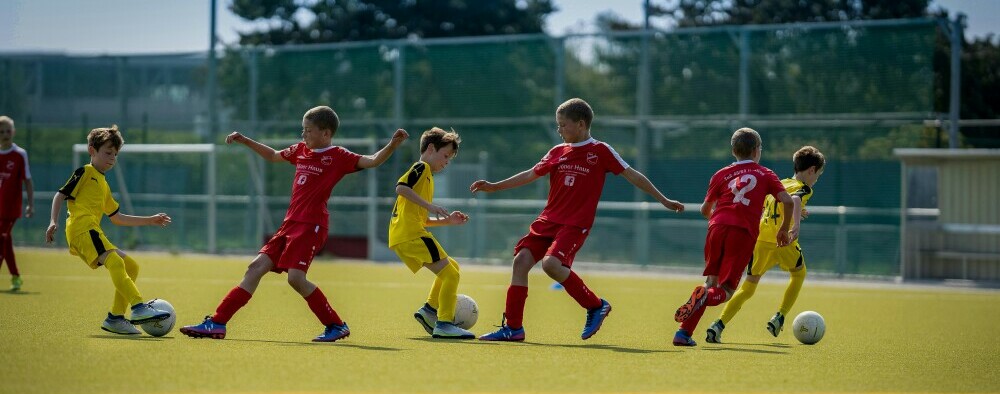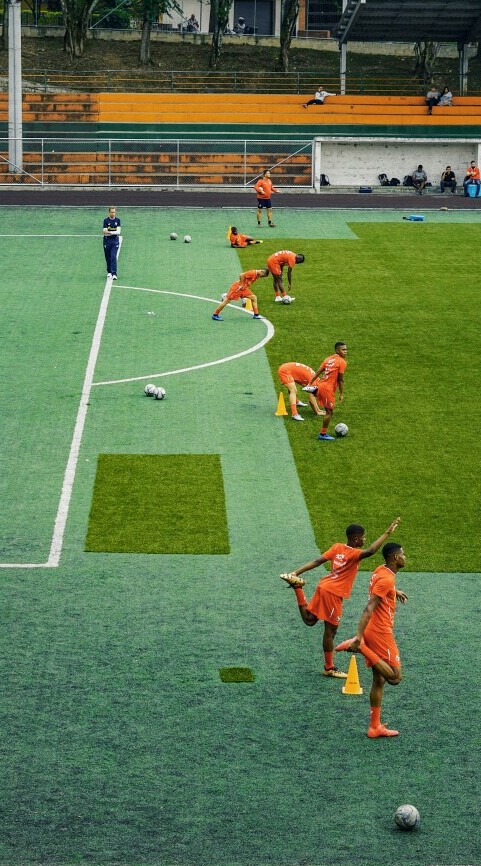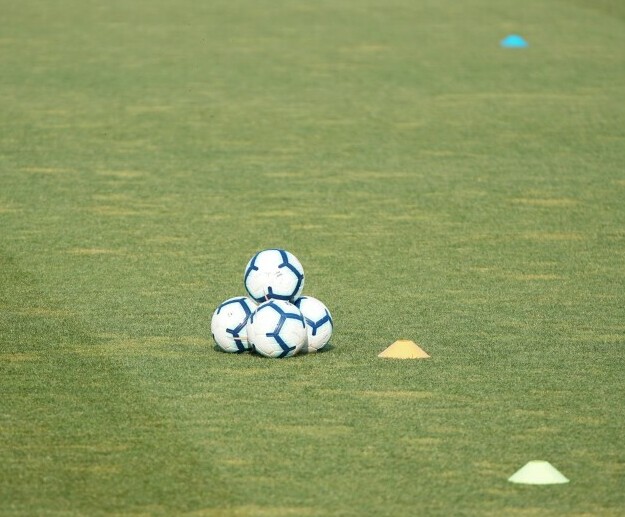Introduction
“Dribbling is an essential skill in soccer, allowing players to maintain possession, navigate through defenders, and create scoring opportunities.
Whether you’re a beginner or an experienced player looking to improve, practicing individual soccer dribbling drills can significantly enhance your game.
In this guide, we’ll explore the best dribbling drills to help you master ball control and take your skills to the next level.”
Table of Contents
- Why Dribbling is Crucial in Soccer
- Essential Tips for Effective Dribbling
- Top 10 Individual Soccer Dribbling Drills
-
- Cone Dribbling Drill
- Zigzag Dribbling Drill
- Figure Eight Drill
- Dribble and Shoot Drill
- Speed Dribbling Drill
- Dribbling with Feints Drill
- Backward Dribbling Drill
- Close Control Dribbling Drill
- 1v1 Dribbling Drill
- Freestyle Dribbling Drill
- How to Incorporate Dribbling Drills into Your Training Routine
- Common Mistakes to Avoid
- Advanced Dribbling Techniques
- Frequently Asked Questions (FAQ)
- Conclusion
1. Why Dribbling is Crucial in Soccer
“Dribbling is more than just moving the ball up the field; it’s about control, creativity, and confidence.
A player with excellent dribbling skills can dictate the pace of the game, bypass defenders, and open up spaces for themselves and their teammates.
Understanding why dribbling is crucial can motivate you to dedicate time to mastering this skill.”
2. Essential Tips for Effective Dribbling
“Before diving into the drills, keep these essential dribbling tips in mind:
- Keep Your Head Up: Always be aware of your surroundings.
- Use Both Feet: Train to dribble effectively with both your left and right foot.
- Stay on Your Toes: Maintain a light and agile stance.
- Control the Ball with Every Step: Make small, precise touches.”
3. Top 10 Individual Soccer Dribbling Drills
a. Cone Dribbling Drill
“Set up a line of cones about one meter apart. Dribble through the cones using the inside and outside of both feet, focusing on tight control and quick changes of direction.”
b. Zigzag Dribbling Drill
“Place cones in a zigzag pattern. Dribble through the cones, emphasizing sharp turns and acceleration out of each turn.”
c. Figure Eight Drill
“Set up two cones a few meters apart. Dribble the ball around the cones in a figure-eight pattern, using both feet to maintain control.”
d. Dribble and Shoot Drill
“Dribble towards a target (such as a cone or small goal), then take a shot once you reach a designated point. This drill helps combine dribbling with shooting accuracy.”
e. Speed Dribbling Drill
“Dribble the ball at maximum speed from one end of the field to the other. Focus on maintaining close control even at high speeds.”
f. Dribbling with Feints Drill
“Practice dribbling with various feints and moves, such as step-overs and body feints, to deceive imaginary defenders.”
g. Backward Dribbling Drill
“Practice dribbling the ball backward to improve overall ball control and awareness.”
h. Close Control Dribbling Drill
“Set up a small area with cones close together. Dribble the ball within the confined space, making quick and precise touches.”
i. 1v1 Dribbling Drill
“Set up a small goal and practice dribbling against an opponent. Focus on using skills to beat the defender and score.”
j. Freestyle Dribbling Drill
“Spend time dribbling freely, using a mix of moves and techniques to build creativity and comfort with the ball.”
4. How to Incorporate Dribbling Drills into Your Training Routine
“To get the most out of these drills, incorporate them into your regular training routine.
Start with a warm-up, focus on 2-3 drills per session, and gradually increase intensity. Consistency is key to improvement.”
5. Common Mistakes to Avoid
“Common mistakes include over-dribbling, neglecting weaker foot, and dribbling with head down.
Focus on correcting these habits to become a more effective dribbler.”
6. Advanced Dribbling Techniques
Once you’ve mastered the basics of dribbling in soccer, it’s time to challenge yourself with advanced techniques that can help you outmaneuver opponents and create scoring opportunities. These techniques require precision, quick thinking, and practice to perfect:
a. Cruyff Turn: Named after Dutch soccer legend Johan Cruyff, this move involves a sudden change of direction to deceive a defender.
Start by feinting to kick the ball with your dominant foot, but instead of kicking it, use the inside of your foot to drag the ball behind your standing leg.
This quick movement can wrong-foot your opponent and create space to accelerate away.
b. Elastico (or Flip Flap): Popularized by Brazilian soccer star Ronaldinho, the Elastico is a flashy move that involves a rapid change of direction to confuse defenders.
Begin by pushing the ball slightly outward with the outside of your foot. Then, use the inside of the same foot to quickly flick the ball back in the opposite direction, ideally past the defender who has committed to your initial movement.
c. Maradona Spin (or Roulette): Named after Argentine legend Diego Maradona, this move is effective for evading tight marking situations.
While running with the ball, plant your dominant foot on the ball and pivot your body 360 degrees in one smooth motion.
As you spin, use the outside of your other foot to push the ball away from the defender.
This move not only shields the ball effectively but also allows you to change direction swiftly.
Benefits of Advanced Dribbling Techniques:
- Creativity: They allow you to approach defenders with unpredictable moves, making it harder for them to anticipate your next action.
- Speed and Agility: Practicing these techniques enhances your agility and quickness on the ball, enabling you to navigate through tight spaces more effectively.
- Confidence: Mastering advanced dribbling techniques boosts your confidence on the field, giving you the belief to take on defenders and create scoring opportunities for yourself or your teammates.
Practice Tips:
- Start practicing these techniques slowly to get the mechanics right before gradually increasing your speed.
- Incorporate these moves into your regular training sessions to build muscle memory and improve execution under pressure.
- Watch videos of professional players performing these moves to understand the timing and execution better.
Mastering advanced dribbling techniques takes time and dedication, but incorporating them into your skill set can elevate your game and make you a more formidable player on the field.
7. Frequently Asked Questions (FAQ)
Q: How often should I practice dribbling drills? “A: Aim for at least 3-4 times a week, focusing on different drills each session.”
Q: How can I improve my weaker foot? “A: Dedicate specific drills to your weaker foot and gradually increase its use in your training.”
Q:How do I set up for Dribbling Drill? A: Set up a straight or slightly curved path using cones spaced several meters apart.
Players should dribble the ball through the cones as quickly as possible, focusing on maintaining close control and minimizing touches. Adjust the distance between cones to increase or decrease the difficulty.
8. Conclusion
“Mastering individual soccer dribbling drills is essential for any player looking to elevate their game.
By incorporating these drills into your training routine, you’ll develop better ball control, agility, and confidence on the field. Remember, consistency and dedication are key.
Please watch out for my upcoming blog posts where I will further break down in detail all the dribbling drills.
If you have any questions or have experience on this topic please leave the message in the comment section below and I promise to get back to you.
Happy training!
Here’s a little transparency: Our website contains affiliate links. This means if you click and make a purchase, we may receive a small commission. Don’t worry, there’s no extra cost to you. It’s a simple way you can support our mission to bring you quality content.




Hey there,
This is a fantastic guide for improving individual dribbling skills in soccer. The drills and techniques outlined are really comprehensive and provide a great roadmap for players of all levels to develop better ball control and dribbling ability. I especially liked the emphasis on using cones and other obstacles to work on close control and changing direction – those are such crucial skills for any player looking to take their game to the next level.
I was wondering if you had any tips on how to progress the difficulty of the dribbling drills over time. Do you have any advice for incorporating these individual dribbling exercises into a full training session or practice?
Keep up the good work!
Marios
Thank you so much for your positive feedback! I’m thrilled to hear that you found the guide comprehensive and helpful for improving individual dribbling skills.
Progressing the difficulty of dribbling drills over time is essential for continuous development. Here are a few tips to help you gradually increase the challenge:
Increase Speed: As players become more comfortable with the drills, encourage them to perform the exercises at a faster pace. This helps improve reaction time and control under pressure.Add Resistance: Introduce passive or active defenders to create a more game-like scenario. This forces players to make quicker decisions and enhances their ability to protect the ball.Use Smaller Spaces: Reducing the size of the dribbling area increases the difficulty of maintaining close control and sharpens players’ agility and precision.Incorporate Multi-Tasking: Combine dribbling drills with other skills such as passing or shooting. For example, after completing a dribbling sequence, have the player make an accurate pass or take a shot on goal.Vary the Obstacles: Use different types of obstacles (cones, poles, agility ladders) and change their configuration regularly to keep the drills challenging and engaging.
To incorporate individual dribbling exercises into a full training session, consider the following structure:
Warm-Up: Start with light dribbling drills to get players moving and gradually increase intensity.Technical Drills: Dedicate a portion of the session to focused dribbling exercises, progressing from basic to advanced drills.Small-Sided Games: Use small-sided games (e.g., 3v3 or 5v5) to apply dribbling skills in a game context. This encourages players to use the techniques under realistic pressure.Conditioned Games: Implement specific rules that emphasize dribbling, such as requiring a certain number of dribbles before passing or shooting.Cool-Down: Finish with light dribbling or ball control exercises to help players wind down.
Thank you again for your kind words and for engaging with the content.